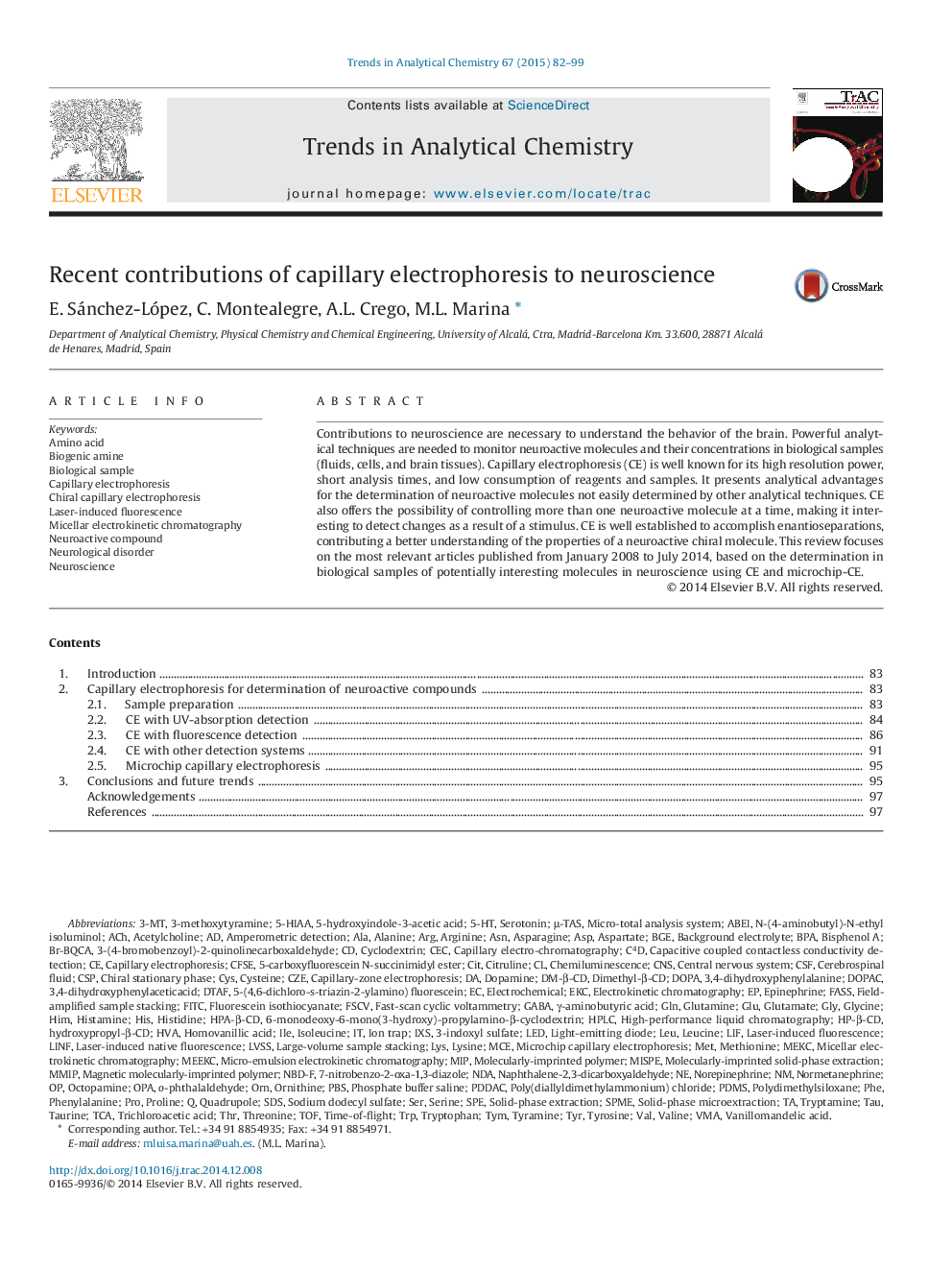| Article ID | Journal | Published Year | Pages | File Type |
|---|---|---|---|---|
| 1247860 | TrAC Trends in Analytical Chemistry | 2015 | 18 Pages |
•Contributions of capillary electrophoresis (CE) to neuroscience (2008-2014).•Capillary electrophoresis can determine neuroactive molecules in biological samples.•Minimum required sample volume of CE allows in vivo and in vitro analysis.•Laser-induced fluorescence has been the most employed detection system.•Chiral CE is excellent for studying enantioselective neurological processes.
Contributions to neuroscience are necessary to understand the behavior of the brain. Powerful analytical techniques are needed to monitor neuroactive molecules and their concentrations in biological samples (fluids, cells, and brain tissues). Capillary electrophoresis (CE) is well known for its high resolution power, short analysis times, and low consumption of reagents and samples. It presents analytical advantages for the determination of neuroactive molecules not easily determined by other analytical techniques. CE also offers the possibility of controlling more than one neuroactive molecule at a time, making it interesting to detect changes as a result of a stimulus. CE is well established to accomplish enantioseparations, contributing a better understanding of the properties of a neuroactive chiral molecule. This review focuses on the most relevant articles published from January 2008 to July 2014, based on the determination in biological samples of potentially interesting molecules in neuroscience using CE and microchip-CE.
